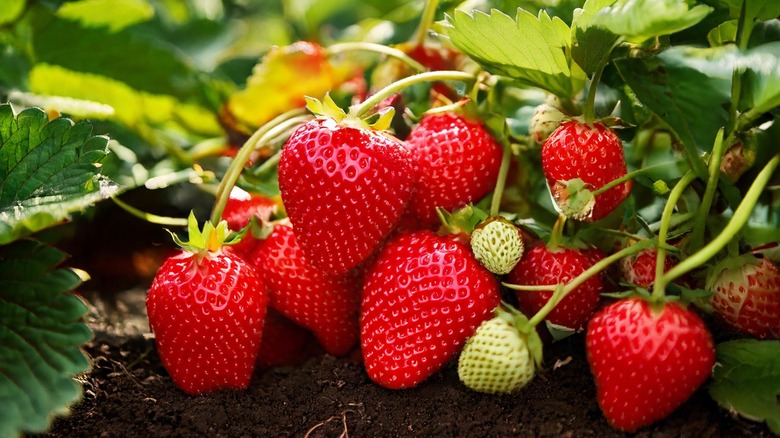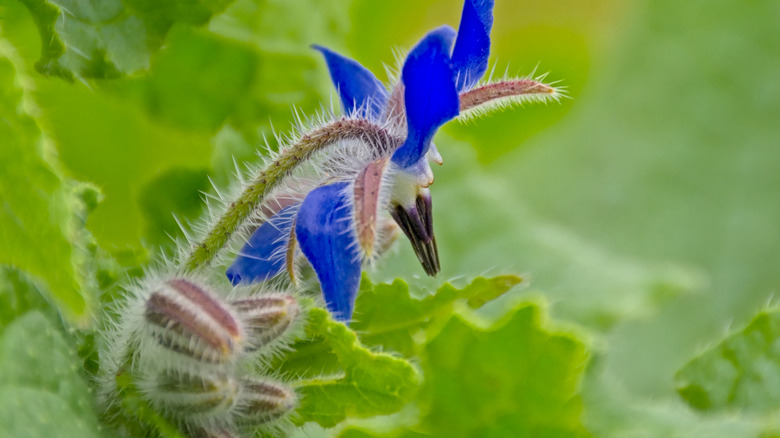Gardener Reveals A Brilliant Technique For Companion Planting: 'Better Yields'
You've probably heard gardeners discuss companion planting and how it benefits your garden. But have you heard someone talk about adding borage (Borago officinalis) as a companion plant for better yields? Probably not. Some secrets, it seems, are still tucked away beneath the soil. Also known as bee bush, bugloss, and starflower, borage is an annual herbaceous plant that can reseed itself and come back year after year — if you let it. It is edible, easy to grow, and a really beautiful flowering annual because of its bright blue, star-shaped flowers. But its real beauty lies in its ability to serve not just as a beautiful cover crop, but also as a companion plant.
It attracts pollinators like honeybees and bumble bees, keeps pests like tomato hornworm and cabbage worm at bay, acts as a living mulch to nurse the soil, and attracts beneficial insects such as lacewings and ladybugs. All of these things can together lead to better yields. Does a companion plant get any better? Well, yes! That is because borage can also improve the taste of your produce, so you don't just get better quantity but better quality, as well. And the best part? Borage works well as a companion to a wide range of plants. Tomatoes, strawberries, legumes, spinach, brassicas, and squash — the list goes on and on.
How to plant borage in your garden for maximum yield
If you want to bring a bountiful harvest to your yard, you have to know how to grow your companion plants, in this case, borage, the right way. You can start the borage plants with seeds, as they germinate easily. You can transplant it, too, but since it has a long taproot, it doesn't handle the process well. Also, you should find a sunny spot with well-drained soil for planting, though the plant will tolerate partial shade, as well. Also, borage needs little water, if any, as plants in the ground generally don't need to be watered, and water from rainfall is usually more than enough.
However, it is not just how you plant it, but where you plant it that matters when using it as a companion. Plant one borage plant every 3 to 4 feet in the center of the matted row, in between rows about 12 to 14 inches from each row as a strip, on opposite edges of a vegetable bed, in between vegetable plants, or just plant it around the trellises — whatever works best for you.
Just make sure you leave plenty of room for it to grow, and also correctly map out and space your garden veggie plants. Borage doesn't take much space, though. On average, it usually reaches about 1½ to 3 feet in height and spreads roughly a foot wide, making it easy to fit among other garden plants. If you don't have enough space in your garden beds, you can even plant it in a container.

